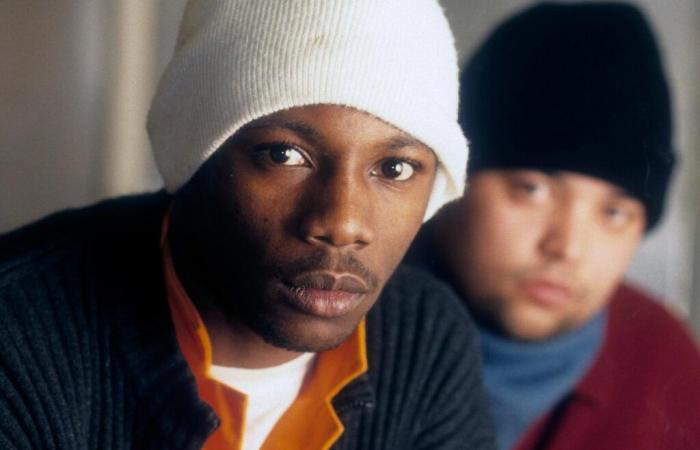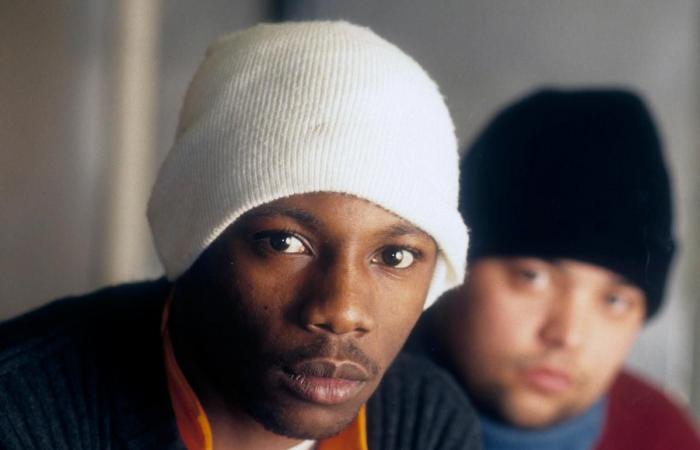As the culture of sampling in rap comes back into the spotlight, journalist Brice Miclet publishes a book on the evolution of this technique in France. He deciphers five legendary examples of French hip-hop.
MC Solaar in 1994. The sample of his song “Bouge de là” is one of the most recognizable in French rap. Photo Al Pereira/Getty Images/Michael Ochs Archives
By Sophie Jeanneteau
Published on November 23, 2024 at 4:00 p.m.
Ccharacteristic of hip-hop production, the culture of sampling has recently seen its craze revived thanks to the documentary DJ Mehdi : Made in France, which has been a sensation on Arte.tv since the beginning of September. Happy coincidence, it is in this context that the music journalist Brice Miclet published on November 22, with Le Mot et le Reste, a work devoted to the history of samples in French rap. After exploring American rap with Sample! At the origins of hip-hop sound in 2018, he is now focusing on the specificities of a French scene with a rich and varied sound heritage.
In French sample & rap, the author deciphers the way in which local artists have reappropriated this technique, born in the United States, to create an increasingly distinct sound. Through striking examples, it sheds light on the evolution of the musical identity of French hip-hop. Explanation in five samples that have become legendary.
Also read:
From MC Solaar to Moby: in the 90s, sampling triumphed in rap and electro
MC Solaar, “Move from there” (1990)
« The sample of Move away, by MC Solaar, is perhaps not the most sophisticated, but it undoubtedly remains one of the most iconic. This is a perfect example to popularize the practice of sampling. The producer Jean-François Delfour took an extract from The Message, by Cymande, a British group of West Indian origin who fused funk, soul and reggae in the 70s. With Move awayMC Solaar brings rap into spheres that had previously escaped it, conquering an audience well beyond its usual boundaries. This piece marks one of the first major successes of rap in France, thus laying the foundations for a popularization of the genre, which some purists were able to criticize Solaar at the time. »
IAM, “Tomorrow is far away” (1997)
“The origin of the sample of Tomorrow is far away, by IAM, remains a sonic enigma, even though this title is among the monuments of French rap. Imhotep, like a true alchemist, constructed a simple loop, but of incredible richness, split into two distinct parts: one decorated with ropes, the other more bare. This rupture creates narrative tension, enveloping the listener in a dark atmosphere. The influences of the producers of the time are clear: film music, French variety and oriental sounds, with orchestration rich in strings and piano. This piece of more than nine minutes embodies the art of French sampling, with a finesse and melancholy specific to this era. »
Also read:
20 years of “The School of the Silver Microphone”: when IAM posed on the cover of “Télérama”
NTM, “Pose ton gun” (1998)
« Pose ton gun, by NTM, stands out as a classic of the genre, as much for its historical weight as for its sound construction. The song is based on a sample from Bobby Womack, who revisits And I Love Her of the Beatles in a heartbreaking soul version. Joey Starr's raw voice blends perfectly with this chilling and extremely striking production, reinforced by a lugubrious music video, shot in a morgue. Everything in this work resonates around death, but it is above all the way in which Womack seems to sing from the beyond that fascinates and terrifies at the same time. The sample really plays a determining role in the dramaturgy of the title. It's one of my favorite rap songs since I was a kid, the first time I heard it, it blew me away. »
113, “The Princes of the City” (1999)
“Thanks to the excellent Arte documentary dedicated to DJ Mehdi, The Princes of the City, of group 113, is experiencing a revival of interest that transcends generations. The sample of Make Me Believe In You, by Curtis Mayfield, plays a central role, with its rising strings creating dramatic tension, before evaporating into a bold house production. DJ Mehdi, already ahead of his time, knew how to play with frequencies like no other, manipulating highs and lows to create a rich and immersive soundscape. Everything in this piece is legendary, from the theme to the rhythmic choices including the group 113 itself. By pushing the codes, this title has become an essential milestone in French rap. »
Damso, “Amnesia” (2016)
“Finally, with Amnesia, from Damso, producer Jowëll drew from the French jazz-funk repertoire of the 70s by sampling Alain Mion, the brains of the group Cortex. This piano riff, with an almost ghostly melody, has spanned the decades. The Frenchman's music has found an unexpected echo among rappers across the Atlantic (Rick Ross, Tyler The Creator and Curren$y have also sampled Cortex pieces). If Damso's title had to be removed from the platforms due to lack of authorization for this extract, the case crystallized the legal issues of sampling in French rap. Paradoxically, this deletion allowed a new generation of listeners to discover the mysteries of sampling, but also the legal tensions that accompany it. »
French sample & rap, by Brice Miclet, ed. The Word and the Rest, 304 p., €24.







